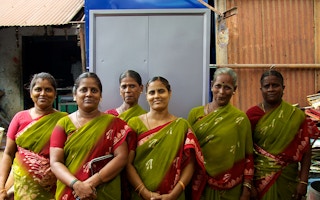I recently attended a meeting of investors, asset managers, foundations, family offices, and social entrepreneurs organised in New York by the Financial Times to explore “gender lens investing,” that is, investing in women and girls to boost overall development impact alongside a financial return. The discussions focused on this new niche as the next big thing in impact investing.
There is a growing body of evidence suggesting that empowering women is critical to boosting global prosperity. For example, new research published in the Stanford Social Innovation Review suggests that if women were to attain equal participation in the economy, they could raise global GDP by up to $28 trillion or 26 per cent in 2025.
McKinsey and Co. estimates that advancing women’s equality in Asia-Pacific countries would raise their annual collective GDP by $4.5 trillion in 2025, a 12 per cent increase over the business-as-usual trajectory. Investing in women yields multiple benefits for corporations, according to an International Finance Corporation (IFC) study.
At the International Monetary Fund (IMF), a staff discussion note has made the case that women bring new skills to the workplace. This may reflect social norms and their impact on upbringing, social interactions, as well as differences in risk preference and response to incentives.
The note’s authors argue that there is a clear economic benefit from gender labor inclusion—that is, from bringing more women into the labor force—over and above the benefit resulting from simply adding more workers regardless of whether they are male or female.
The IFC and IMF studies also reflect growing interest in impact investing and women and girls by bilateral and multilateral international finance institutions (IFIs), which have long been leaders in taking into gender into account when providing loans and grants.
For instance, the Inter-American Development Bank and the Overseas Private Investment Corporation recently partnered to launch Fund Mujer, the first gender-focused fund for Latin America and the Caribbean, which could serve as inspiration (as well as a catalyst for) similar IFI-backed funds in other parts of the world.
Another example is the IFC’s Banking on Womenprogram, which provides financing and expertise for women-owned small and medium-sized enterprises (SMEs).
Investing in women is certainly nothing new to ADB, which adopted a Gender and Development Policy more than twenty years ago. ADB recognises that promoting women’s economic empowerment can result in investments with stronger development impacts, and encourage long-term behavior change in private sector partners.
In 2017, some 43 per cent of ADB’s annual new investment of $20 billion went into investment projects and transactions that help to narrow gender gaps and empower women and girls. A little over a year ago, ADB issued its first gender bond to finance a pool of eligible projects that promote gender equality and women’s empowerment in Asia and the Pacific, purchased in its entirety by Japan’s Dai-Ichi Life Insurance Company.
“
A better understanding of the benefits of gender impact investing, celebrating success stories, and supporting women-focused intermediaries can all help drive more investing in women and girls in the region.
The efforts of ADB and others are encouraging steps in the right direction. A 2018 study by the Global Impact Investing Network (GIIN) and Intellecap points out that gender lens investing in Southeast Asia is rising thanks to targeted, market-building activities by ecosystem builders, donors, and IFIs.
But there’s more work to be done. Growth in gender lens investing is constrained by a sparse pipeline of investees as well as lack of well-defined metrics for gender impact.
A better understanding of the benefits of gender impact investing, celebrating success stories, and supporting women-focused intermediaries can all help drive more investing in women and girls in the region.
The GIIN/Intellecap research notes that in Southeast Asia, gender inequality causes female entrepreneurs to face specific challenges such as weak social support, lack of confidence, and limited access to financial networks.
In response to such obstacles, ADB has recently started investing in a private equity fund in Southeast Asia that has developed its own gender scorecard for its investments and prioritises women-led SMEs.
ADB also successfully applied last year for a $12.6 million grant from the Women Entrepreneurs Finance Initiative to enable over 600 women owned-led SMEs to access finance to start or grow their businesses.
The grant targets women in rural areas and aims to boost the capacity of financial institutions and government agencies to deliver more gender-inclusive policies, products and services, and strengthen women’s business skills and capacity through training, networking, and mentoring.
Moving forward, ADB’s new Strategy 2030 has an ambitious target of making 55 per cent of all sovereign and non-sovereign investments meet the stringent requirements to be categorized as contributing to gender mainstreaming.
IFIs have clearly realised the immense potential of investing in women and girls. Now it’s time to stay the course and look forward to future generations thriving in a gender-inclusive world.
Bart W. Édes is North America’s representative at the Asian Development Bank. This article is republished from the ADB Blog.


















